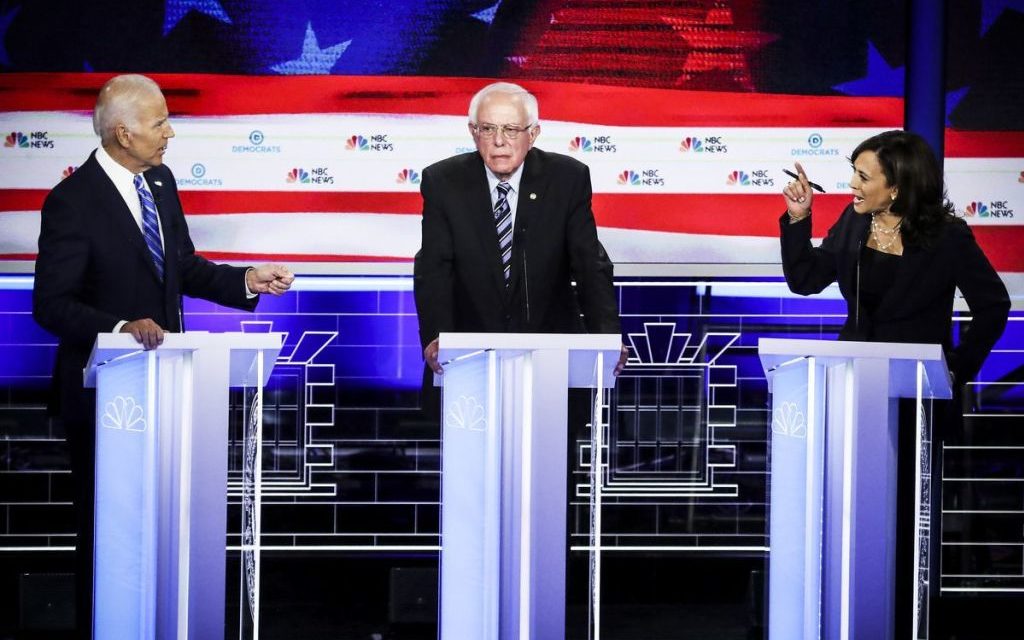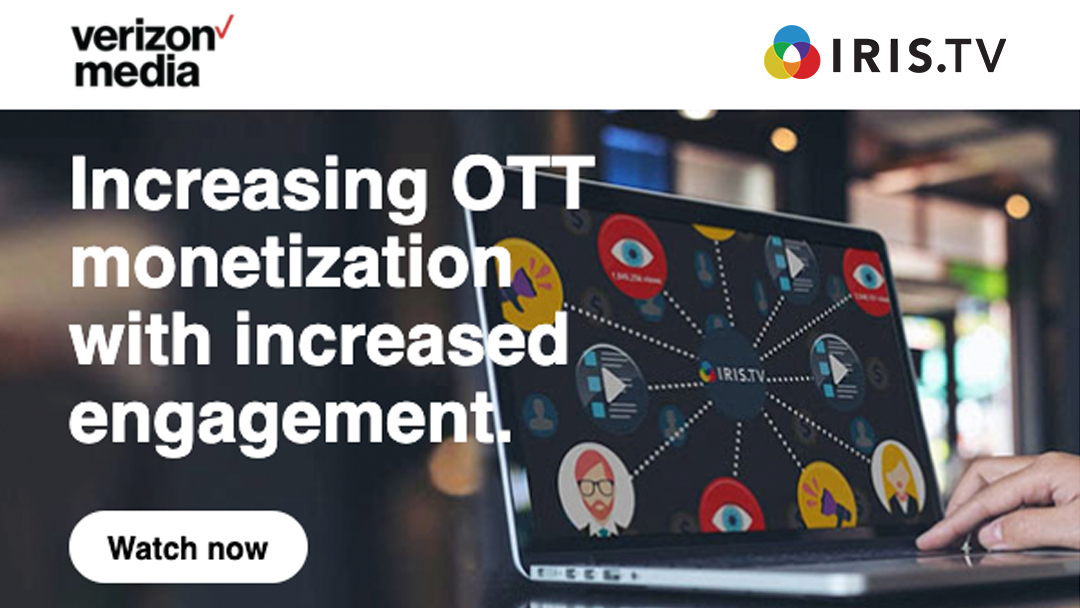Four Ways Publishers Can Best Leverage 2020 Election Coverage
Posted by Melissa Lachman | Jul 12, 2019 | Video Recommendations |
As 2020 approaches, election coverage is picking up steam. There is a lot of chatter around the sheer number of Democratic candidates running, opinions on their levels of leadership experience and personal pasts, and the president’s reactions, but one thing we know for sure is that we’re in for a wild ride until November 3, 2020.
On Wednesday, June 26th and Thursday, June 27th, NBC and Telemundo streamed the first Democratic debates which were soon followed by many memes and narratives about who the “winners and losers” were.
According to political pundits, some favorite frontrunners like Vice President Joe Biden did not perform as well as expected, while previously unknown candidates like California Sen. Kamala Harris stole the spotlight, and yet others tried to respond to questions in Spanish, much to the public’s amusement.
There will be 12 debates during the 2020 presidential primary, so it’s important for publishers to focus on what to cover, when, and how. This will be an intense election season and although no one can predict the end result, there are a few key ways publishers can prepare to best leverage the content and hype around the next election.
#1 - Evaluate what content will equip you to capture the most audience
It’s fair to say that the level of engagement and viewership for the first debates was unexpected. Some publishers that might not regularly or fully cover political events may have underestimated the level of interest in these debates as it’s still early on in the race. However, our current political climate has proven otherwise.
Don’t miss out on an opportunity to keep your audience engaged. Keep in mind that your user's time is valuable and they're spending it on your site, which is a great opportunity to turn that acquired audience into a loyal user base.
Moderator: Do you have a plan to deal with Mitch McConnell? Elizabeth Warren:#DemDebate #DemocraticDebate pic.twitter.com/na2fHo02bS — W. E. B. Dem Bois (@WEB_DemBois) June 27, 2019
So, if you haven’t developed any content for the debates, you should. After all, these are tentpole events. In 2018, USA Today wanted to better leverage Winter Olympics coverage. With a data-driven approach, the team optimized their strategy and enhanced the user experience for new and loyal audiences on a national and local scale. Not only did the improved experience capture and retain users, it satisfied advertisers and had a positive impact on revenue.
For the upcoming debates, think about the topics that your audiences care about, What are big issues that will impact certain communities, areas, or groups of people? Take a look at content on those topics and focus on assets with high views and low bounce rates.
Knowing your audience and what they care about will provide a better, more relevant user experience.
#2 - Use Specific Tags and Categories Instead of Generic Ones
Be sure to create a specific category and tag for important highlights or clips from the debates, i.e. “Democratic Debates 2020” or “Election 2020” and make sure to tag those assets consistently.
By creating a debate-specific category, you are able to start to gauge and distinguish your core audience interested in debate content versus overall political content. With this level of detail, your team is equipped to focus on key programming for the next debate and the ongoing election cycle.
One major news and entertainment publisher used a generic “Election” tag for all 2020 democratic debate video assets, however, this allowed for too many assets, including 2016 election assets to be surfaced as video recommendations. Armed with data from IRIS Vision™, this client correctly determined that creating a more specific category for recent debate assets could improve performance.
To keep users engaged, it’s important to surface relevant content when users are seeking the most recent coverage especially the day after a tentpole event. Using generic tags for this content risks losing an audience due to poor user experience. Consider creating categories based on each candidate as the debates ramp up, since content by candidate will begin to increase.
#3 - Understand Your Audience
IRIS.TV news clients range from local, to national, to international outlets. Each publication has a strategy to cover the debates based on their respective audience.
For example, a local publication in Florida chose to cover certain candidates and topics that were of most interest to their Spanish-speaking audience. They focused on immigration and gun control which are top of mind to Florida residents, and Texas Rep. Beto O’Rourke’s attempt to respond to a question in Spanish. These assets performed well in the days following the debate.
Consider different ways to capture and keep the attention of a "political interest" audience. Given that most publishers do not own the full rights to debate coverage, there is still an opportunity to keep users engaged with content that is related to the issue or candidate. Look at the data and determine which assets in those topic areas have high recommendation views and low bounce rate. Supplemental videos on the same topics that perform well, could be a fit for this audience who came to your site for debate coverage.
#4 - Consider Mobile vs. Desktop Consumption Habits
IRIS.TV data shows that users consume and interact with video content on desktop more during the week while mobile consumption is greater during the weekends. Users are more willing to watch a longer asset on desktop than they are on mobile devices. Understanding this behavior will give you a lead on how to distribute your video assets following the debates.
For national news clients, highlights are key, but again, don’t lose sight of asset length, device, and day.
One national news and entertainment clients had a three-minute highlight video that was performing poorly. With data provided in the IRIS Vision™ dashboard, the client was able to see poor performance on this longer asset and make an informed decision to break it down into multiple, one or two minute long clips. This optimization yielded better results. Put yourself in the position of the user and how you would want to consume content.
The takeaway here is to publish shorter video clips on the weekend and feature longer assets during the weekdays. Again, this should be tracked and based on performance, optimize as needed.
Learning From the First Debates
More people tuned in for the debates, especially for the second night
Every aspect of these events including the moderators, networks hosting and live-streaming, candidates and their interactions with each other, reactions by President Trump, and other factors are sure to be dissected, applauded, and ridiculed. Viewers are taking the debates seriously enough to tune in during the summer months and are actively discussing on social media.
IRIS.TV client USA Today has prepared for the second round of debates by featuring clips on the most discussed candidates from the first debates including Vice President Joe Biden, Senator Kamala Harris, and Senator Bernie Sanders.
Publishers can "win" by thinking of these debates as tentpole events that provide an opportunity to engage audiences. With a few guiding principles in place: prepare content leading up to and directly after the debate, ensure metadata is accurate, specific and consistent, and as always, take a data-driven approach to determine the best ways to distribute content based on your user's consumption behavior, and ensure a strong user experience to retain loyal users.
Get ready for the next debates which will be held in Detroit on July 30 and July 31 on CNN and Univision.
Have questions on how to maximize on election 2020 coverage? Consult with your IRIS.TV programming strategists or contact us here.


.jpg)






